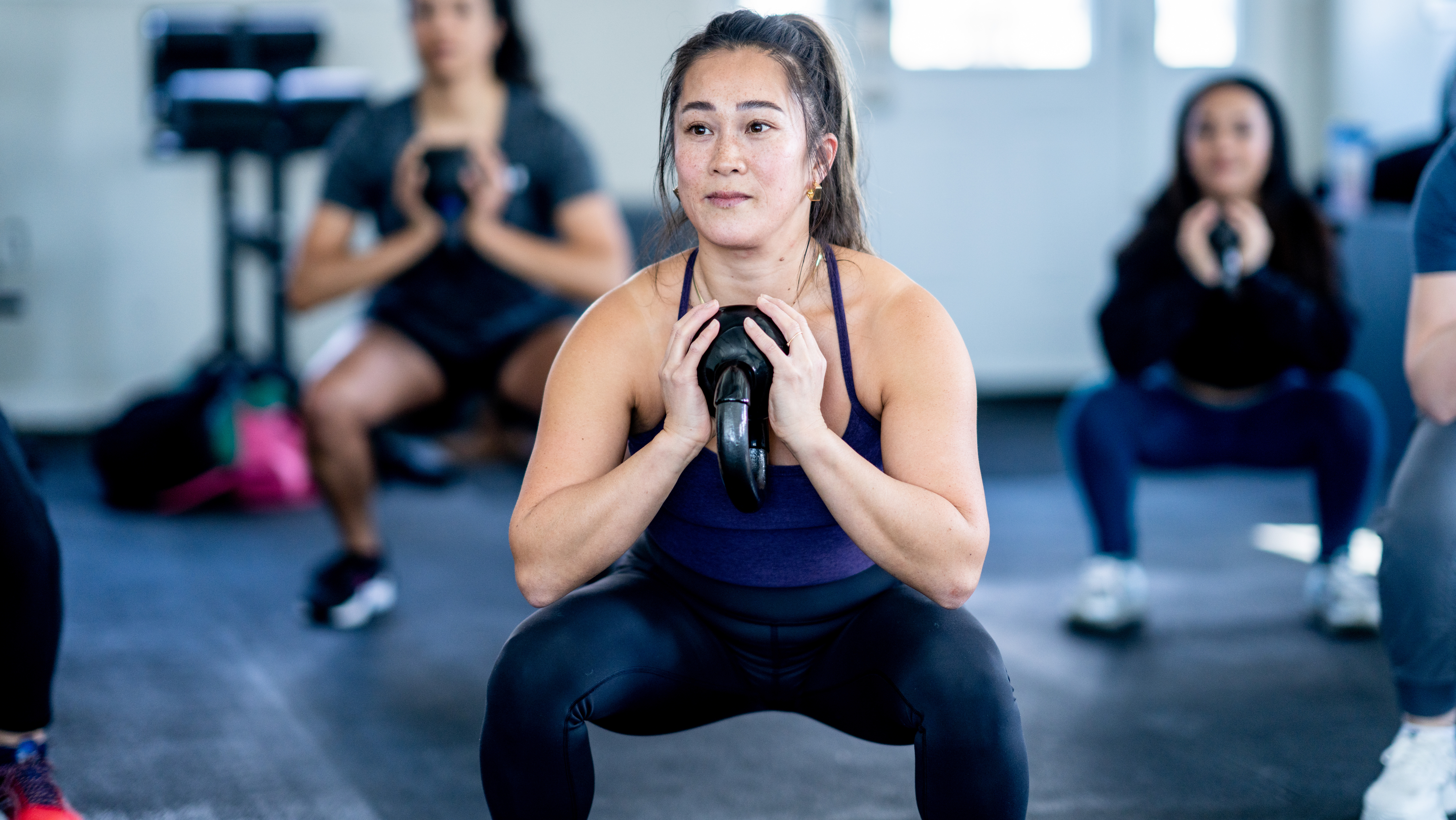Three moves every runner should include in their home training plan, according to a physical therapist
Strong legs make a strong runner

All you need to run is a good pair of sneakers, right? Well, sort of. If your goal is to run well, and run injury-free, you also need a functional strength training plan to support your efforts. One that keeps your muscles, bones and joints robust and race-ready.
"Strength training plays a critical role in reducing injury risk and enhancing running performance," physical therapist Adrian D'Costa recently explained in an Instagram post for the Runna app. The running specialist explained that it can improve muscle imbalances, joint stability, and overall resilience to the repetitive stress that running places on the body.
"Simple yet powerful exercises such as squats, deadlifts, and heel raises are particularly beneficial for runners," he added. "When performed with proper form and progressively increasing resistance, these exercises can significantly enhance a runner’s strength and performance."
We tracked D'Costa down to ask how often runners should include these exercises in their training, how many sets and repetitions to perform, and how to make sure all the work in the gym doesn't undermine your success on the road.
Three exercises every runner should include in their training
A post shared by Runna | Running Coaching App (@runna)
A photo posted by on
Before running head first into this workout, it's worth noting that D'Costa says there is no single best strength training exercise for runners. "The most effective exercises are those that are performed consistently with a focus on progression," he says.
Exercises similar to those listed below are also valid, so long as they are performed consistently, with good form, while gradually increasing the load lifted or number of sets or repetitions (reps) completed to ensure your muscles keep getting stronger.
That said, D'Costa has picked these three moves for good reason. Calf raises develop strength and resilience in the lower legs to help absorb impact and provide an added spring in your step as you run. Romanian deadlifts will keep the injury-prone hamstrings in the back of your legs strong yet supple. And goblet squats will bolster the quadriceps muscles on the front of the thighs, which serve as your primary stabilizers when running.
Start your week with achievable workout ideas, health tips and wellbeing advice in your inbox.
For beginners, D'Costa suggests starting with 3-4 sets of 8-12 reps, working at a moderate effort level—about 5-6 out of 10 on the Rate of Perceived Exertion (RPE) scale. For more experienced runners, you could try going harder on the squats and deadlifts, aiming for 3-5 sets of 6-8 reps with a higher intensity of 7-8 out of 10 RPE.
"This approach helps build strength without overloading your system," he says. "Just remember, these numbers should be adjusted as you get closer to race day to avoid extra fatigue and allow for a smooth taper."
1. Calf raise
- Stand with feet together and your weight loaded on the balls of your feet.
- Hold a support for balance, then lift both heels and squeeze your calf muscles.
- Pause, then lower slowly to tap the floor and repeat.
- To make these harder, work one leg at a time, with the other foot raised off the floor.
D'Costa says: "These can be performed with just bodyweight at first, but gradually you want to make them harder by using a step or adding an external load by holding a weight."
2. Romanian deadlift
- Stand tall with feet hip-width apart, holding dumbbells in front of your thighs.
- Hinge forward at your hips while sticking your bum out to slowly lower the weights down the front of your thighs, past your knees to mid-shin height.
- Drive your hips forward to reverse the movement and stand tall.
- Keep your back flat and core engaged throughout.
D'Costa says: "RDLs are amazing to get your hamstrings not only strong, but also long. Hamstrings love length and strength and this exercise gives you both."
3. Goblet squat
- Cup the head of a dumbbell in both hands, holding it close to your chest.
- With feet hip-width apart, sit your bum back to slowly lower into a squat, keeping your knees wide apart to engage your glutes and avoid letting your knees cave in.
- Push through your heels and return to standing.
- Keep your back flat and core engaged throughout.
D'Costa says: "With all these exercises, focus on tempo and tension. Use a slow tempo as you lower to maintain tension in the muscles throughout, then drive up powerfully."
How to use strength workouts to support your running training
"When adding strength work to your running training, timing is everything," D'Costa tells Fit&Well. In a perfect world, if training for an upcoming race, you'd spend a few weeks laying the foundations of strength before starting your main running block to "avoid an overwhelming increase in overall load on your muscles and nervous system".
Once up and running, D'Costa then recommends scheduling your strength workouts on the same day as a hard run. The following day should be a rest and refuel day, to allow your body to recover fully ahead of your next big running day.
For newer runners or those with a packed schedule, he says it’s also fine to perform your strength sessions on non-running days. "In that case, be mindful of what’s coming up in your running plan the next day, and adjust the intensity accordingly to avoid residual fatigue that might impact your run," he says.

Sam Rider is an experienced freelance journalist, specialising in health, fitness and wellness. He is also a REPS level 3 qualified personal trainer.
